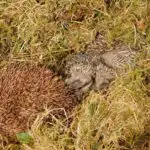
Quick Answer: Hedgehogs are not globally endangered but face significant threats like habitat loss, making some species vulnerable. Conservation efforts and legal protections are in place to safeguard them. Hedgehogs endangered.
Key Takeaways:
- Hedgehog populations are declining globally due to habitat destruction, climate change, and human activities, with specific threats including urbanization, traffic mortality, and pesticide use affecting their survival and reproductive success.
- Conservation efforts are crucial, with the IUCN Red List providing a framework for assessing species’ risk of extinction, and national and regional classifications helping to tailor local conservation strategies, supported by wildlife organizations’ habitat restoration and public education campaigns.
- Legal protections for hedgehogs vary internationally and by country, with agreements like CITES and national wildlife acts aiming to safeguard populations, though challenges in enforcement highlight the need for public awareness and advocacy to strengthen these laws.
Understanding if Hedgehogs are Endangered
Hedgehogs are small, spiny mammals that have captured the hearts of people around the world. However, many are unaware that these creatures are facing serious threats to their survival. Hedgehog species vary and are spread across Europe, Asia, and Africa, but their presence is dwindling due to several factors. The most pressing issues include habitat destruction, climate change, and human activities. Understanding these threats is vital to developing effective conservation strategies and raising public awareness.
Declining Hedgehog Populations Globally
Recent studies paint a worrying picture for hedgehogs. Their numbers are falling in many places where they were once common, signaling a situation where the term “hedgehog endangered” is becoming increasingly relevant. For instance, in the UK, populations have plummeted by over 50% in rural areas since the turn of the century. Similar trends are observed in other parts of their range. Experts warn that the decline of hedgehogs can upset the balance of ecosystems, as they play a crucial role in controlling insect populations and acting as prey for larger animals. These statistics are not just numbers; they signal a call to action to protect these animals and the environments they inhabit.
Specific Threats to Hedgehog Survival
Hedgehogs face a myriad of dangers in both their natural and urban habitats. Urbanization leads to the loss of their natural homes, while agricultural practices often destroy the hedges and grasslands they need for shelter and foraging. Traffic mortality is a significant cause of death, with thousands of hedgehogs killed on roads each year. Additionally, the widespread use of pesticides reduces their food sources, as insects and other invertebrates are killed off. These factors combine to not only reduce hedgehog numbers but also weaken their health and ability to reproduce.
Habitat Loss and Fragmentation
The division of land for development and agriculture has created a patchwork of habitats that are often too small or isolated to support healthy hedgehog populations. These animals need large, connected areas to find enough food and mates. Landscape fragmentation also makes it harder for hedgehogs to move safely between areas, which is essential for maintaining genetic diversity. In places like the UK, studies have shown how new housing developments can lead to local extinctions of hedgehog populations, underscoring the importance of planning for wildlife-friendly spaces.
Road Mortality and Human Interference
Cars and trucks are a deadly hazard for hedgehogs, which often crossroads at night. Wildlife crossings and tunnels can help, but they need to be more widely implemented. Public education is also key, teaching people how to make their gardens and local areas safer for hedgehogs. Simple steps like checking for hedgehogs before using lawnmowers or strimmers can save lives. Moreover, understanding the ethical considerations of interacting with wildlife is important. While well-intentioned, feeding hedgehogs inappropriate food or handling them unnecessarily can do more harm than good.
Pesticides and Loss of Invertebrate Prey
The decline in insects and other invertebrates due to pesticide use is a double blow for hedgehogs. Not only does it deplete their primary food source, but it also affects their reproductive success. Without a steady diet of invertebrates, hedgehogs can struggle to gain enough weight to survive hibernation or to reproduce successfully. Promoting alternative pest control methods and enhancing biodiversity in gardens and farmlands can support hedgehog diets and contribute to their conservation.
The plight of hedgehogs is a complex issue, but with a better understanding of the challenges they face, we can work towards solutions that will help protect these beloved animals for generations to come.
Conservation Status of Hedgehogs
When we talk about hedgehogs, it’s not just their cute faces that should capture our attention. Their conservation status is a critical issue that needs our focus. The IUCN Red List is a key resource that helps us understand how different species of hedgehogs are faring in the wild. Being classified as “endangered” or “vulnerable” is a clear signal that a species is in trouble and needs help. Wildlife conservation organizations play a pivotal role in monitoring these statuses and spearheading efforts to protect these spiny mammals.
IUCN Red List and Hedgehog Species
The IUCN Red List is the go-to source for assessing the risk of extinction faced by various species, including hedgehogs. For example, the European hedgehog is listed as “Least Concern,” but this doesn’t mean they are safe everywhere. In some places, their numbers are dwindling. The Red List criteria consider factors like population size, rate of decline, and geographic range. This information is vital for setting conservation priorities and directing resources where they’re most needed. Keeping the Red List current requires ongoing research and data collection, which is a massive global effort.
National and Regional Conservation Classifications
While the IUCN Red List provides a global perspective, national and regional conservation classifications can differ. Countries may have their systems for monitoring local hedgehog populations. These systems take into account specific threats and conservation needs that might not be reflected on the international stage. For instance, hedgehogs in the UK are considered a priority for conservation due to significant declines. Some regions have seen success with initiatives like wildlife corridors and traffic-calming measures to protect hedgehogs. These local efforts are crucial and can serve as models for other areas.
The Role of Wildlife Conservation Organizations
Wildlife conservation organizations are the champions of hedgehog protection. They work tirelessly to safeguard these animals through various projects. These can include:
- Habitat restoration to ensure hedgehogs have safe places to live and breed.
- Public education campaigns to raise awareness about the challenges hedgehogs face.
- Collaborative efforts with governments and communities to create effective conservation strategies.
Organizations such as the Hedgehog Preservation Society have made significant strides in improving the plight of hedgehogs. Their work not only benefits hedgehogs but also enriches our natural world. The success of these organizations is a testament to what can be achieved when people come together for a common cause.
The conservation status of hedgehogs is a complex issue, but with the right information and action, we can ensure these beloved creatures continue to thrive. It’s up to us to support the organizations and initiatives that are making a difference in the world of hedgehog conservation.
Legal Protections for Hedgehogs
Hedgehogs are not just adorable; they are a vital part of our ecosystem. Thankfully, there are legal frameworks in place to protect these creatures. From international agreements to country-specific laws, various measures aim to safeguard hedgehog populations. However, the effectiveness of these laws and the challenges in enforcing them are ongoing concerns. Recent developments in hedgehog protection legislation show progress, but there’s still much work to be done. Advocacy plays a key role in shaping these laws, emphasizing the need for strong legal protections to prevent further decline of hedgehog populations.
International Laws and Agreements
On the international stage, agreements like the Convention on International Trade in Endangered Species (CITES) and the Convention on Biological Diversity (CBD) are crucial for hedgehog conservation. These agreements work to protect hedgehogs by:
- Regulating international trade of hedgehogs and their parts.
- Promoting the conservation of hedgehog habitats worldwide.
International cooperation is essential for the success of these agreements, but implementation can be challenging. Different countries face unique obstacles, from lack of resources to differing priorities, which can hinder global conservation efforts.
Country-Specific Hedgehog Protection Measures
Many countries with native hedgehog populations have enacted their protection measures. These can include:
- Wildlife protection acts that make it illegal to harm hedgehogs or destroy their habitats.
- Traffic regulations that reduce roadkill by creating safer crossing paths for hedgehogs.
These measures are tailored to the specific needs and contexts of each country. Local authorities and communities are often involved in enforcing these laws, which is crucial for their success. The impact of such measures on hedgehog conservation is significant, helping to stabilize and even increase hedgehog numbers in some areas.
Enforcement and Effectiveness of Hedgehog Protection Laws
Enforcing hedgehog protection laws is a complex task. Challenges include:
- Monitoring vast areas to detect violations.
- Allocating sufficient resources for effective law enforcement.
Non-governmental organizations and citizen scientists play a supportive role in law enforcement, helping to track compliance and report infractions. Public awareness and education are also key to the success of legal protections. When people understand the importance of hedgehogs and the laws that protect them, they’re more likely to comply and support conservation efforts.
The legal protections in place for hedgehogs are a testament to our recognition of their importance. By continuing to strengthen and enforce these laws, we can ensure that hedgehogs remain a cherished part of our natural world.
Active Conservation Efforts and Initiatives
The plight of hedgehogs has not gone unnoticed, and numerous conservation efforts are underway to ensure their survival. These initiatives encompass a broad spectrum of strategies, from habitat management to community engagement, all designed to create a more hedgehog-friendly world. Specific projects with clear goals are at the heart of these efforts, involving a diverse group of stakeholders from conservationists to everyday citizens. The success of these initiatives hinges on their grounding in evidence-based practices, and they require ongoing support and funding to make a lasting impact.
Habitat Creation and Management
Central to hedgehog conservation is the creation and management of suitable habitats. Hedgehogs thrive in environments with plenty of cover and food sources, which can be supported by:
- Planting hedges and other native vegetation to provide shelter.
- Reducing pesticide use to ensure a healthy insect population for hedgehogs to feed on.
Landowners and gardeners play a crucial role in this, turning their green spaces into havens for hedgehogs. These efforts not only benefit hedgehogs but also enhance biodiversity as a whole, supporting a variety of wildlife.
Road Crossing Solutions and Wildlife Corridors
Roads can be deadly for hedgehogs, but there are solutions at hand. Wildlife crossings and traffic calming measures are being implemented to help hedgehogs navigate safely across busy roads. The effectiveness of these solutions often depends on their design and placement. Additionally, wildlife corridors are vital in connecting fragmented habitats, allowing hedgehogs to move freely and safely. Transportation authorities and urban planners are increasingly recognizing the importance of integrating these wildlife-friendly designs into infrastructure projects.
Public Education and Awareness Campaigns
Informing and engaging the public is a cornerstone of hedgehog conservation. Through various strategies, including:
- Workshops
- Social media outreach
- Educational programs in schools
These campaigns aim to shift public behavior and attitudes towards hedgehogs, fostering a conservation-minded society. Accurate and accessible information is key to empowering people to take action in protecting hedgehogs.
Research and Monitoring of Hedgehog Populations
Understanding hedgehog needs and challenges is critical, and this is where research and monitoring come into play. Techniques such as surveys and the use of tracking devices provide valuable data on hedgehog populations and health. Scientific research delves into hedgehog ecology, shedding light on the best ways to protect them. Collaboration is essential, with researchers, conservationists, and the public joining forces to ensure these efforts are effective.
Active conservation initiatives are the lifeline for hedgehogs, offering hope for their future. By supporting these efforts, we can make a real difference in the lives of these charming creatures.
How to Support Hedgehog Conservation
Supporting hedgehog conservation is a multifaceted endeavor that requires action from individuals and communities alike. Whether it’s through hands-on volunteering, transforming your backyard into a hedgehog haven, or pushing for impactful policy changes, every effort counts. By engaging with and supporting conservation organizations, we can contribute to the protection and recovery of hedgehog populations.
Volunteering with Conservation Projects
Volunteering with local conservation projects is a rewarding way to help hedgehogs. These projects often need help with:
- Habitat restoration efforts, such as building hedgehog homes and planting native flora.
- Conducting public outreach to educate others about hedgehog conservation.
Volunteers gain a sense of accomplishment and connection to their local environment. Plus, community involvement is a key driver of successful conservation initiatives.
Creating Hedgehog-Friendly Gardens and Spaces
You can make a big difference right in your own garden by creating a space that welcomes hedgehogs. Consider these tips:
- Provide shelter with hedgehog houses and leave areas of the garden wild for natural cover.
- Ensure there are ample food sources, like a dish of water and a variety of plants that attract insects.
- Create safe passages by making holes in fences to allow hedgehogs to pass through freely.
Avoiding harmful practices is also crucial. For instance, steer clear of slug pellets and netting that can injure or trap hedgehogs. These small changes can significantly boost local hedgehog populations.
Advocating for Policy Changes and Legislation
Advocacy plays a powerful role in securing policy changes and stronger legislation for hedgehog conservation. Here’s how you can get involved:
- Engage with decision-makers to highlight the importance of hedgehog-friendly policies.
- Start or sign petitions that call for action and demonstrate public support for hedgehogs.
- Use social media and community events to raise awareness and gather public support.
Successful advocacy can lead to legislative success, providing hedgehogs with the legal protection they need to survive and thrive.
Supporting Hedgehog Rescue Centers and Rehabilitation Programs
Hedgehog rescue centers and rehabilitation programs are vital for the care and recovery of injured hedgehogs. These centers rely on public support to operate, and there are several ways to help:
- Donations provide the funds needed for medical supplies and care.
- Volunteering your time can assist with the daily operations and care of hedgehogs.
- Raising awareness about the centers’ work encourages others to support their efforts.
The work of these centers is crucial for the recovery of hedgehog populations, giving injured animals a second chance at life in the wild.
By taking these steps to support hedgehog conservation, we can all play a part in ensuring these charming creatures continue to be a part of our natural world.
Frequently Asked Questions
Question 1:
Are there any specific hedgehog species in the US, and are they endangered?
Answer: No, there are no native hedgehog species in the US; they are native to Europe, Asia, and Africa. Domesticated hedgehogs in the US are typically African pygmy hedgehogs.
Question 2:
Can I keep a hedgehog as a pet if they are endangered?
Answer: In some places, yes, but it depends on local laws and the species’ conservation status. Always ensure it’s legal and ethical before acquiring a hedgehog as a pet.
Question 3:
How can I identify if a hedgehog is endangered when I see one in the wild?
Answer: You can’t identify if a hedgehog is endangered by sight alone. Check the IUCN Red List or local wildlife authorities for the conservation status of hedgehogs in that region.
Question 4:
Are there any international days or events dedicated to hedgehog awareness and conservation?
Answer: Yes, International Hedgehog Day is celebrated on February 2nd to raise awareness about hedgehog conservation.
Question 5:
Do hedgehogs have any natural predators, and do these predators affect their endangered status?
Answer: Hedgehogs have natural predators like birds of prey, foxes, and badgers, but human activities are the primary threat to their endangered status, not predation.
Read more facts about Hedgehogs here.
Further read about Endangered species here.









